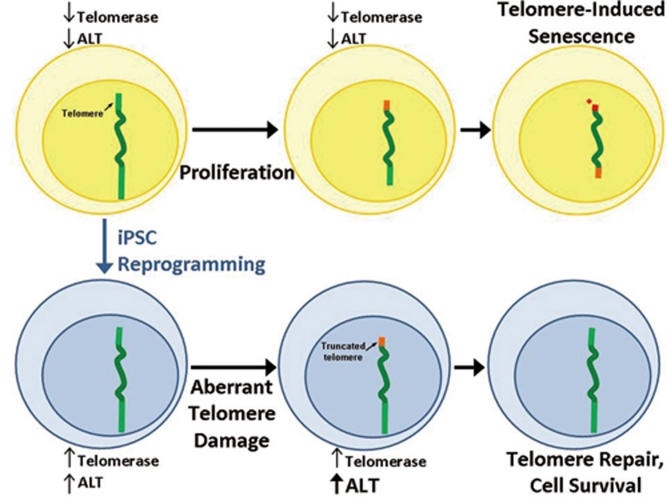Figure 1.
Comparison of telomere length regulation in somatic cells and derived iPSCs. Most normal human adult somatic cells (shown in yellow, top panel) lack telomerase and ALT recombination-based mechanisms to maintain telomere length. Consequently, telomere attrition occurs as these cells proliferate until one or more telomeres become too short to retain proper capping function (red, marked with asterisk). Re-programming of adult somatic cells to a pluripotent state (shown in blue, lower panel) using Yamanaka transcription factors activates both telomerase and ALT mechanisms for telomere length maintenance or extension. Consequently if one or more telomeres encounter sporadic damage, causing sudden truncation to a dangerously short length (orange), it may be efficiently repaired (ALT is particularly important for iPSC telomere repair), allowing continued cell proliferation and avoiding further genomic damage.

